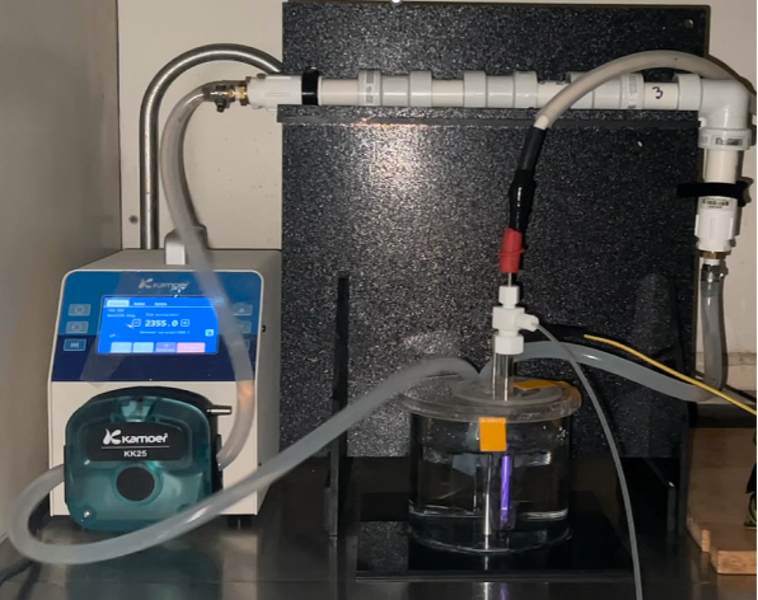Our recent study tested the continuous production and disinfection effectiveness of plasma activated water bubbles (PAWB) under different hydrodynamic regimes (e.g., laminar, transitional and turbulent) against mixed species biofilms inside pipelines. We built a lab-scale drinking water system with microbial biofilms grown inside them. PAWB were generated and circulated continuously in the drinking water system. Increasing Reynold’s number of water circulation significantly resulted in the higher inactivation of the surface-attached cells into the drinking water supply. The inactivation effectiveness of PAWB was enhanced under a high Reynold’s number indicating the synergistic action of shear stress and plasma reactive species. Our research improved our understanding of the potential application of PAWB for disinfection of the drinking water pipelines and food contact surfaces and will help us to scale-up this technology. This research was fundamental for the development of different plasma reactors for the continuous production of plasma microbubbles and nanobubbles. Currently, we are working with industry trials using PAWB technology to determine microbial inactivation in drinking water pipelines in broiler farms.
Manuscripts:
- *Dhaliwal, H. K., Yang, X., & **Roopesh. M. S. Continuous production and recirculation of plasma-activated water bubbles under different flow regimes for mixed-species bacterial biofilm inactivation inside pipelines. (Submitted).
Collaborators:
Dr. Xianqin Yang (Agriculture and Agri-Food Canada)
Dr. Michael Ganzle (Department of AFNS, University of Alberta)
Dr. Lynn McMullen (Department of AFNS, University of Alberta)
Funding support:




